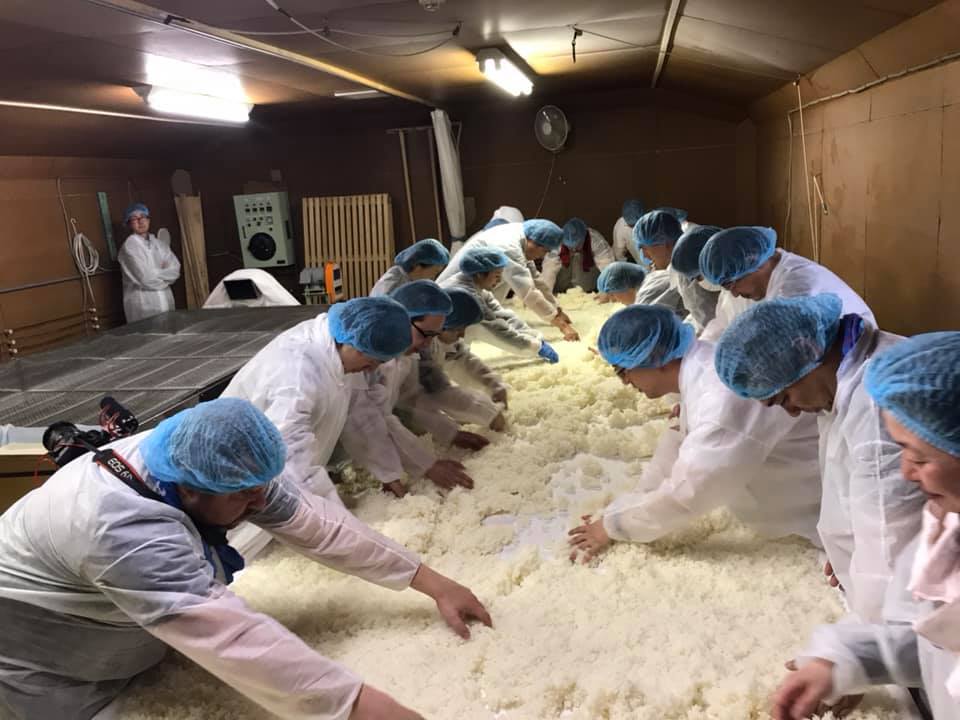
A visit to Tamagawa Brewery in Niigata
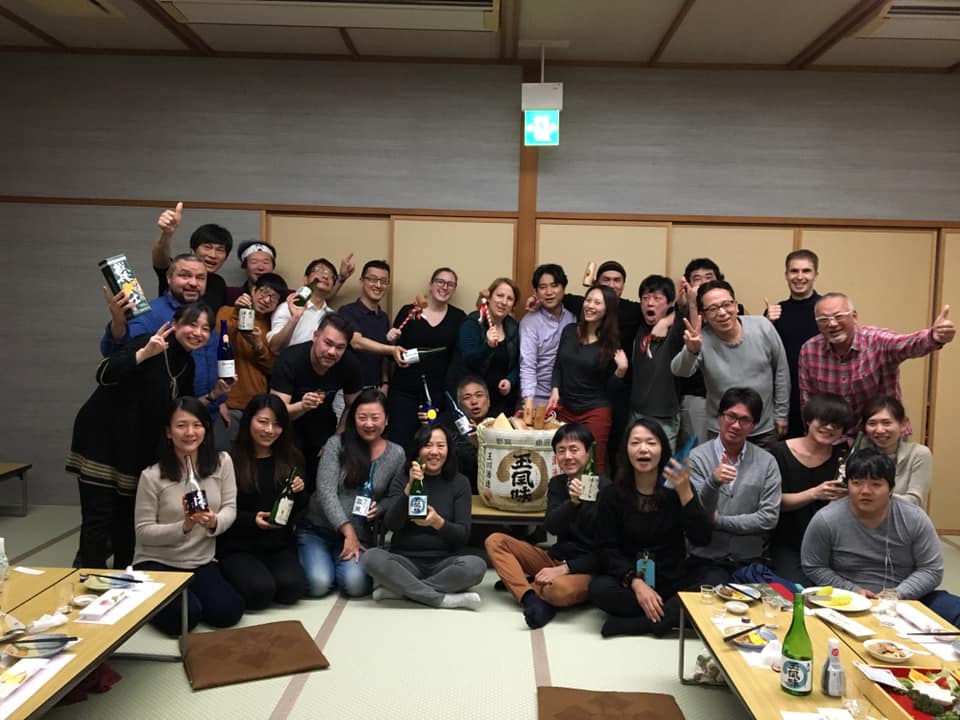
Washoku, the traditional foods of Japan, was recorded by UNESCO in the list of world’s intangible cultural heritage in 2013 but, before this, eating Japanese food abroad has become easier and cheaper. One can criticize what kinds of dishes are being served under the label of “Japanese food” in restaurants outside Japan. But the truth is that good and real eats have been increasing everywhere, from outstanding (and overpriced) sushi to cheap and delicious ramen. From Berlin to São Paulo, it is now easier to have a good taste on Japanese food in the Western world.
So, what is next? Sake, for sure. No good food is enough without a good drink and sake is the best Japan can offer in this field. Good sake is arriving slowly (but steadily) in Europe and the Americas. That’s why it is still difficult to find your sake outside of Japan. I’ve been hearing people complaining about sake being plain or bland. I don’t understand it because my interest in sake was born in Japan. But, to be really honest, it wasn’t easy to find my taste due to the fact that there are so many options out there. If abundance is bliss, choosing is a challenge.
One of the best ways to learn about sake is to visit a brewery. There are about 1,300 sake breweries in Japan. Fortunately, most of them have some sort of visitation program. The sad part is that most of the inside tours are only held in Japanese. Hiring a connoisseur guide is not a bad idea for those who can afford it. But even if you can’t, it is worth visiting a brewery by yourself, especially because you can have some free tastes and this is still the best way to know if a sake is good or not.
SAKE LOVERS offers some beautifully arranged tours in English that are very satisfactory even for those who speak Japanese very well. A few months ago, I was fortunate to participate in one of these tours to Tamagawa Shuzo, a brewery located in the snowy prefecture of Niigata, on the way to the north of Japan. It was the beginning of sake season and we had the rare opportunity to engage in some production activities there.
Why Niigata?
Sakes from Niigata are regarded as some of the best in Japan. In winter, the prefecture is buried in snow. This can be seen as a problem by most of us. Not for sake, though. This is a fermented drink and it means that cold temperatures slow down the fermentation process which is vital for enhancing flavours and aromas.
In Niigata, snow melts slowly from the spring on. Then, water droplets are absorbed by the soil and turn into springs that flow down to the rivers. This cycle guarantees plenty of good quality water to some regions within Niigata and other neighboring prefectures. Water in good quality is very important for sake production and Niigata has plenty of it.
Good soil, mild climate and water in profusion makes Niigata one of the leaders in rice production in Japan. The prefecture product is regarded as the most delicious by many Japanese. Rice to make sake is not the same as the cereal that goes to our tables. However, Niigata farmers also produce good quality sakamai, the type of rice used to make sake. These three reasons make Niigata sake a top sake producer in the country and visiting a sake brewery there is a chance to get to know good sake and a great learning experience.
The brewery
Tamagawa Shuzo is located at Uonuma, in the Southeastern part of Niigata Prefecture. It is a small size brewery founded in 1673, in the age of samurais. They have a line up of almost 20 bottles among sakes and liquors like umeshu (plum wine) and yuzushu (yuzu citrus wine).
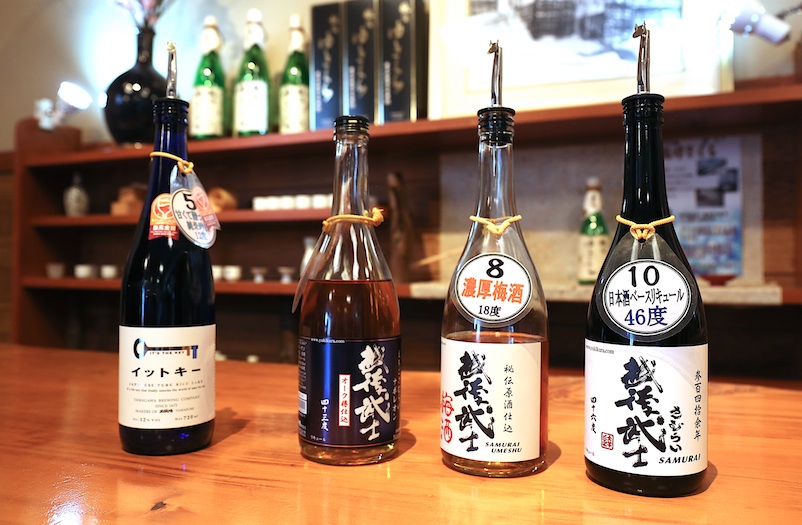
The brewery stands about three and a half hours away from Tokyo by car. We took a bus at the city center early in the morning to arrive there in time for the first activity. Washing and rinsing rice is the first step after milling. Milling has an important role in sake production since it is determinant to the quality of the final product. The most you mill the rice the higher the degree you can designate to your sake. Wearing caps to our heads and shoes, we learned how to wash and rinse the milled rice in the cold water of November.
After rinsing, rice is steamed. Part of this cooked rice goes to a sweaty room where it is inoculated with a fungus called Aspergillus oryzae, known in Japanese as koji. This is one of the most magical parts of sake production. I completely forgot the high temperature of the room and all the efforts we had made to knead the rice before inoculation. The brewer used a wooden rounded box to pour a green dust, which is koji itself, into the rice. It looks like a spell and I will never forget the scene.
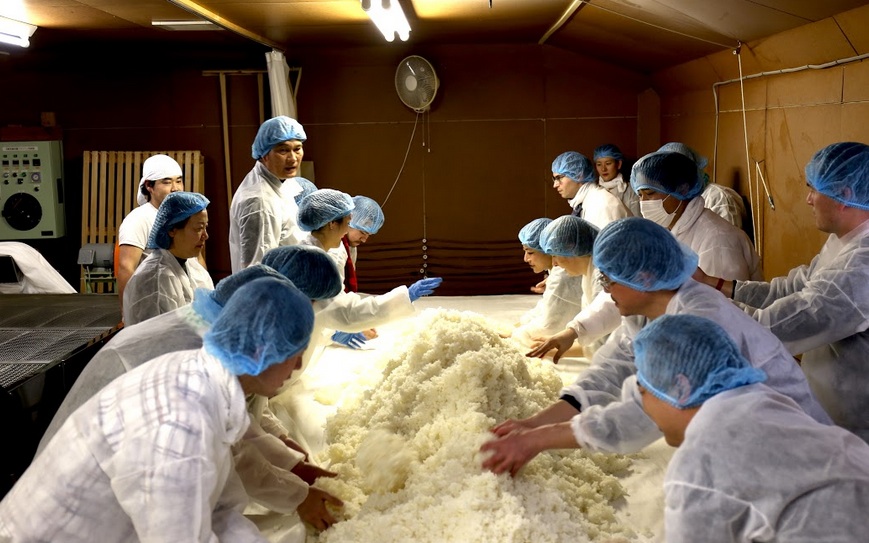
For real, this koji rice makes the magic, or at least part of it, since the fungus turns the starch on the rice into sugar, a process called saccharification. But something more is needed. Yeast is also added to the mixture made by previously steamed rice, koji rice and water. Yeast completes the process making alcohol from sugar. In sake, the koji and yeast actions occur simultaneously.
About thirty days are needed to see this mash turn into sake. Filtration is used to extract sake from the mash. The resulting liquid passes for heating processes in order to kill the remaining agents. After all that, sake is ready for consumption. At Tamagawa Brewery part of the produce goes to the next step: aging.
Maturing sake with nature
Aged sake is quite rare. Usually, sake is made to be consumed as soon as possible. It doesn’t mean “fresh” since most of the bottles are not shipped immediately after production. Fresh sake (called namazake in Japanese) also exists and it is very tasty but it is a small fraction of what goes to the market. Most of the produce is bottled and shipped within a year. Aging is nothing new in the sake world. There are records of aged sake being produced for nobles and aristocrats in the 13th century. Yet it is becoming a trend nowadays, although very slowly. Matured sake is often much more expensive than regular sake.
Tamagawa Brewery produces a handful of such bottles and takes advantage of the weather to produce aged sake in a unique way: inside a cave covered by snow almost year round. There are bottles more than 30 years old and tastes vary according to the number of years of maturation.
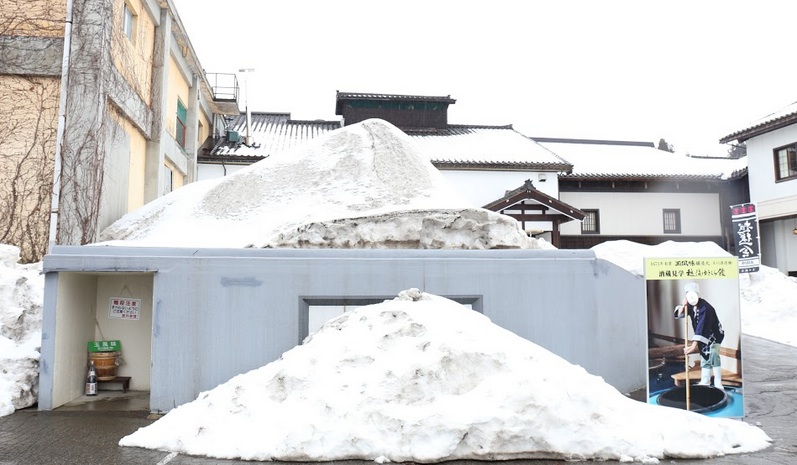
They also produce a special edition called Echigo Samurai which is aged in casks, like whiskies and wines. Different than ordinary sake, which has no more than 16% alcohol content, this series goes to 43%. Echigo Samurai is such a distinct thing that can’t even be legally called nihonshu, which is the name in Japanese for the thing we know as “sake” in the West. It’s labeled as “liquor”. Taste and aroma are also unlike any other sake I had tasted so far. It feels a lot like whisky and this shows that aging is a whole new way for sake.
Tamagawa Shuzo is close to completing 350 years of history. Surviving as a sake brewery all this time is a big deal. It is not an easy time for sake brewing in Japan. Years before the new coronavirus, which is also having a strong negative impact on the business, small breweries have been challenging to survive. For years, young people were seeing sake as old fashion. Beer is now the most consumed alcoholic beverage in Japan.
To win the hearts of new generations, breweries must be creative and persuasive. Tamagawa has been both along the years without losing sight of all its history. This is amazing even for Japan which is regarded as a country that preserves its traditions. But one can only be aware of this after being so close to them as we did. That’s why I strongly recommend you to visit a brewery, especially small ones. Good is the sake that tastes delicious. Best are those who make history of it. Tamagawa’s bottles for sure can be added to this second list.
Roberto Maxwell
journalist
instagram: @robertomaxwell




